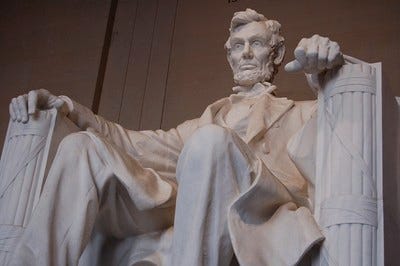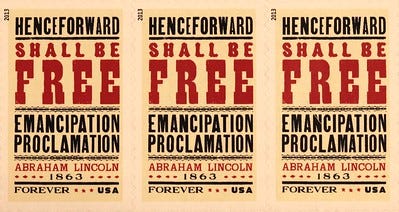What Are Nationwide Injunctions?
Can a single federal judge really stop the President from implementing policies?
The Trump administration has been sued by political activists, government employees, and others upwards of 200 times since inauguration day. Generally, the lawsuits are challenging the “validity” of one or more of the administration’s policy prescriptions made via executive action in the form of an executive order (EO). Other forms of executive actions are the presidential memorandum or presidential proclamation.
What is an Executive Order?
Executive orders are always directed toward government agencies and the officials who run them (all agencies are in the Executive Branch of which the President is the head).
To have the force of law, each EO must do at least two things:
state the source of the president’s authority for issuing the executive order, which is either the U.S. Constitution and/or federal law/statute; hence, Constitutional authority, statutory authority, or both; and
be published in the Federal Register, the government’s daily public journal for regulatory activity.
SIDEBAR » Having a robust website for the Federal Register makes it much easier for citizens to understand the regulatory process (lawmaking outside of Congress) and to weigh-in on government actions via the rulemaking process.
Executive orders can’t contravene a federal statute passed by Congress, but they can, as many say, “fill in the gaps.” Since it’s the Executive Branch’s job to administer and enforce the law, executive orders have become an increasingly popular way to create efficiency, especially given Congressional gridlock.
Some Historical Background
Every president, except William Henry Harrison, has issued at least one executive order. Harrison died in office just 30 days after his inauguration, so that’s his excuse!
George Washington issued eight (8), Lincoln issued 48, and Ulysses S. Grant issued 217.
Since the beginning of the 20th century, several presidents have issued over 1,000 executive orders during the course of their respective terms, including Theodore Roosevelt (1,081), Woodrow Wilson (1,803), Calvin Coolidge (1,203), and Herbert Hoover (1,003).
But, FDR takes the cake with 3,725. He issued 2,819 during his first two terms alone, another 884 in his third term, and 22 in his fourth and final term, which lasted just under 90 days given his passing on April 12, 1945.
And these numbers don’t include other forms executive actions: memorandums and proclamations!
Here are a few famous executive actions you may recognize from the annals of history.
Lincoln’s 1863 Emancipation Proclamation was an executive order as well as a presidential proclamation.
FDR’s 1942 authorization to remove “all persons in the U.S. deemed a threat to national security” to “relocation centers” was made via executive order, Authorizing the Secretary of War to Prescribe Military Areas. Of course, we all know this order resulted in widespread incarceration of Japanese-Americans in internment camps.
Harry Truman desegregated the U.S. military in 1948 via executive order entitled Desegregation of the Armed Forces.
Barack Obama’s 2012 Deferred Action for Childhood Arrivals program, or DACA, was also created via executive action, but instead of an EO, Obama issued a presidential memorandum. Then Secretary of Homeland Security, Janet Napolitano, issued a memorandum outlining how to implement DACA, per Obama’s directions.
Back to Trump …
Among the myriad lawsuits challenging the administration, many request the presiding judge to grant a preliminary injunction against the administration’s implementation of the specific policy articulated in the EO, pending disposition of the underlying case. Litigation ususally takes years!
What is an Injunction?
An injunction is a court order compelling a defendant to start doing or to refrain from doing something in particular. Injunctions do not involve financial compensation or money damages, they only address the defendant’s actions or behavior. To understand the verbiage, when a court orders an injunction against the defendant, it’s enjoining them from continuing or refraining from doing something, such as implementation of a policy.
There are three types of injunctions:
Temporary Restraining Order (TRO)
Preliminary Injunction (PI)
Permanent Injunction
A TRO is an emergency measure put into effect until the court can put something more enduring in place. Courts (judges) may issue TRO’s without a court hearing and without giving the defendant any prior notice of its actions, but they can’t last for more than 10 days without further proceedings. TROs are issued when the defendant’s actions are deemed particularly harmful to the plaintiff and must be stopped immediately. In 1981, a federal court issued a TRO against the Los Angeles School District to stop it from changing the existing bus plan for fear it may harm the students. TROs have been a frequent tool of judges in the Trump cases.
A preliminary injunction is more enduring than a TRO and can only be issued after a court hearing. A preliminary injunction always follows a TRO, if one is issued. Preliminary injunctions are also temporary in the sense that they are only effect while the underlying case is being litigated. They’re issued before the substantive case gets underway and remain in effect until the litigation ends. Depending of the results of the case, the preliminary injunction will be withdrawn or converted into a permanent injunction.
A permanent injunction enjoins the defendant’s actions or behavior permanently, or at least unless and until it is successfully appealed.
What is a nationwide injunction?
According to the Congressional Research Service, nationwide injunctions, also called national injunctions, universal injunctions, or even cosmic injunctions, are unique not because of the geographic reach of a court order, but because of the type of defendant to which the injunction applies, i.e. the federal government.
If a federal court enjoins the government from implementing the particular policy, regulation, or even a law that’s being challenged in the case before it, it’s tough to tailor or limit the injunction to only apply to the named plaintiff. Simply put, the government implements a federal policy (national in scope) or it doesn’t.
For context, there are 94 federal district courts (district courts are the trial courts in the federal system) and each has multiple judges. Normally, a decision from a federal district court judge would apply only to the named plaintiff over whom the court has jurisdiction (authority to rule). If the goal is for a court order to apply to a broad range of people equally affected by the defendant’s actions, the legal vehicle is the class-action lawsuit. This means that the court order applies to everyone in the “class,” not everyone in the country.
If you saw the 2000 film Erin Brockovich starring Julia Roberts, you’ve seen a class-action lawsuit play out. Residents of Hinkley, California formed a class of plaintiffs and then filed a class-action suit against PG&E for dumping 370 million gallons of chromium-tainted waste water into wastewater ponds around Hinkley. The case was ultimately settled in 1996 for $333 million, which was divided equally among the members of the “class.” But there are standards for what constitutes a “class,” and it’s hard work to organize a class-action suit.
The Trump Cases
As noted above, most of the cases filed against the Trump administration have asked the relevant court to issue a preliminary injunction against the government, barring it from implementing an executive order. Essentially, the suits claim that the President doesn’t actually have the legal authority to issue it, or that the subject of the order is illegal. As such, the court should nullify the executive order.
These cases are unique not because of the subject matter, but because the defendant is the federal government and any preliminary injunctions are necessarily very broad in scope. For the first 175 years of our history, American courts rarely enjoined a defendant’s actions with respect to nonparties. Nationwide injunctions are a relatively new legal development and are extremely controversial.
Most of the Trump cases look something like this.
A state or advocacy organization has sued the federal government to stop an executive order from going into effect.
The judge assigned to the case has enjoined the government from implementing the executive order while the merits of underlying case are being litigated (which could take years).
As a practical matter, the government isn’t just enjoined from implementing the executive order as it relates to the particular state or advocacy organization, the government is effectively enjoined from implementing the executive order at all.
The administration appealed the lower’s court’s injunction.
Status of the Trump Cases
Between January 20, 2025 and March 27, 2025, federal judges issued 17 nationwide injunctions, ten of which have made it to the U.S. Supreme Court. Of the 10 cases, seven (7) cases have been decided (5 in favor of the administration, 2 against the administration); the remaining three (3) have not been decided, but that’s about to change.
The three (3) undecided cases relate to the President’s Executive Order regarding birthright citizenship: Protecting the Meaning and Value of American Citizenship. The U.S. Supreme Court will hear arguments on Thursday, May 15 at 10 am.
We expect the Supreme Court to focus the arguments on whether the lower court injunctions may remain in place, whether they should be lifted, or whether the scope of the injunctions can/should be limited to the specific plaintiffs, pending the outcome of the underlying litigation. It is unclear how far the high court intends to go vis-a-vis ruling of the validity of nationwide injunctions themselves, but we will get a better sense of their thinking during oral arguments.
I will write a separate post addressing the specifics of the birthright citizenship cases themselves and the various legal questions at issue. Contrary to a slew of media reports, the Supreme Court has never taken up the specific question of whether children of illegal aliens born in the United States fall under the birthright citizenship clause of the 14th Amendment. They’ve ruled on children born to legal immigrants, but not illegal aliens. 14A, Section 1 Clause 1 (birthright citizenship clause) reads as follows:
All persons born or naturalized in the United States, and subject to the jurisdiction thereof, are citizens of the United States and of the State wherein they reside.
The present controversy is over the phrase “and subject to the jurisdiction thereof.” Again, most media reporting skips over the jurisdictional caveat so it’s hard for the public to gain a clear understanding of what’s really at issue.
In Sum
Nationwide injunctions are extremely controversial given their enormous scope and impact. Since the 1960s, they’ve been used by both parties to interfere with implementation of executive actions, which raises significant separation of powers issues. Is there any legal basis for a single judge having the authority to stop the executive branch from implementing its policies, especially those demanded by voters?
I don’t know when we’ll have answers, but Pandora’s Box has been opened, the genie’s out of the bottle, and the cat’s out of the bag. All I can say now is … let the legal battles commence!
Back soon with a summary of the birthright citizenship cases themselves!
—
As always, thank you for supporting our work!
Kelley for the Savvy Citizen team …
May 12, 2025








